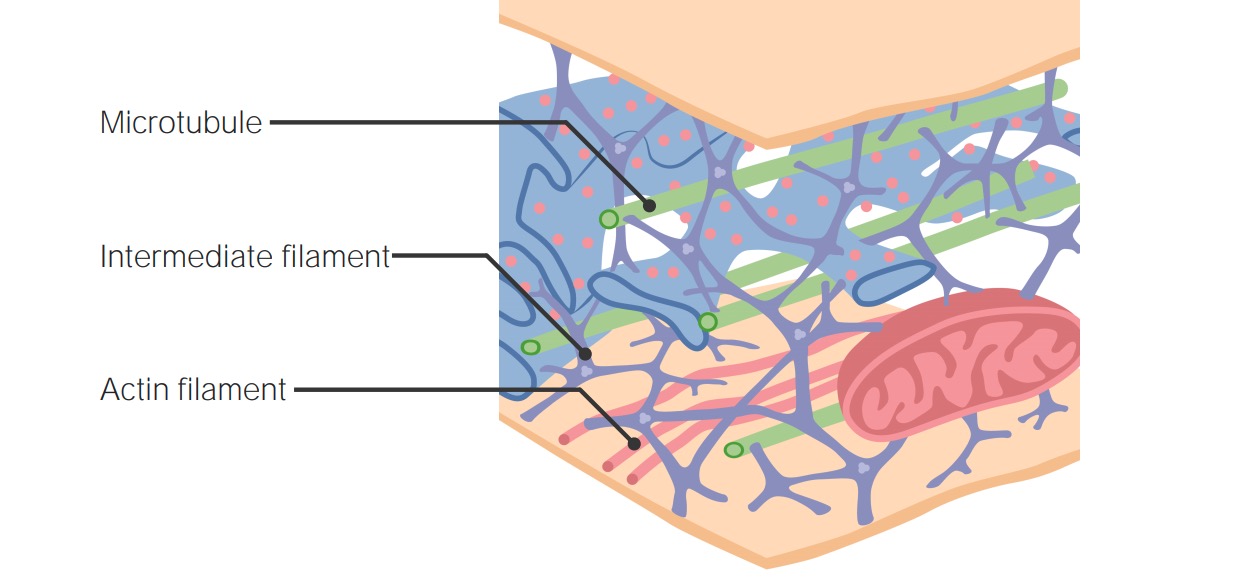Playlist
Show Playlist
Hide Playlist
Aquaporin (AQP): Definition, Structure & Function
-
Slides GP Membrane Physiology.pdf
-
Download Lecture Overview
00:01 So let’s start off with pores. 00:03 So pores are very nice in terms of they’re usually very fast. 00:09 however, they’re not regulated in quite the same way. 00:12 In fact, usually, when they are inserted in the cell membrane, they are open, although you can modulate this a little bit from time to time with protein-protein interactions. 00:23 So think of this a lot like a funnel. 00:27 You have a funnel in the cell membrane, you pour something like water into it and it moves directly through that cell membrane. 00:36 Now, aquaporins are these molecules and they are located throughout the body. 00:42 There are 13 primary types of aquaporins and we label those from 0 to 12, and they are in various densities in different tissues. 00:52 So, adipocytes or fat cells have this aquaporin 7 in them. 00:58 Blood have more specific type of aquaporins, 1, 3, and 9. 01:04 The central nervous system or brain has 1, 3, 4, and 5. 01:10 The skin has aquaporin 3. 01:13 Skeletal muscle uses aquaporin 4. 01:16 The lungs use 3, 4, and 5. 01:19 And finally, the kidney uses 1, 2, 3, 4, and 7. 01:25 We’re going to spend the prototype time in this particular pore talking about aquaporin 2, which is located primarily in the kidney. 01:36 So how do aquaporin 2s work? Well, these are going to be water channels, and in the kidney, you want to move water from the apical membrane or from the apical lumen side, across the apical membrane, into the cell. 01:51 This allows you to reabsorb water. 01:55 And why do you want to reabsorb water? So you don’t dehydrate, so you can have as much water within the system as you can. 02:02 If you don’t reabsorb water, you’ll end up peeing it or urinating it out. 02:08 How do these work? These are all in the apical membrane here allowing water transport to move, but you need to have an osmotic gradient for water to move. 02:18 What determines water transport is basically the density of aquaporin 2 channels on this membrane. 02:25 The more channels you have, the more water will move if you have an osmotic gradient. 02:29 The less channels you have, the less water will move if that gradient exist. 02:34 How do you regulate the amount of aquaporin channels? It’s primarily by a vesicle membrane insertion. 02:42 So, in response to a stimulus, in this case, it’s using antidiuretic hormone also known as arginine vasopressin. 02:51 You signal these vesicles with aquaporins in them to fuse within the membrane of that apical side of the cell. 03:02 It has in it aquaporins, so how you regulate this is you just butt and insert this particular vesicle within that apical membrane and that increases the density of cell transporters. 03:17 How does this process work? It can be seen here, where you need to have binding of this arginine vasopressin to a particular receptor and then through a signaling process, you will both make more aquaporin 2 and cause phosphorylation of various proteins to make these vesicles dock and fuse on the apical membrane. 03:44 And this is how this kind of pore system works and how aquaporin 2 channels importantly affect body-fluid balance in the kidney.
About the Lecture
The lecture Aquaporin (AQP): Definition, Structure & Function by Thad Wilson, PhD is from the course Membrane Physiology.
Included Quiz Questions
Which of the following statements best describes an aquaporin?
- A pore in the cell membrane
- A transmembrane receptor
- An ion channel
- A solute carrier
- An ATPase transporter
Which aquaporin is most commonly found on the apical membrane of the collecting duct of the kidney?
- AQP2
- AQP1
- AQP7
- AQP4
- AQP5
What determines the amount of water transported by aquaporins in the kidney?
- The apical density of AQP channels in the cells of the collecting duct
- The amount of water in the distal tubule
- The aquaporins in the interstitial space
- The density of the blood facing the basolateral membrane of the collecting ducts
- The amount of sodium in the macula densa
How is the number of aquaporin channels regulated?
- By vesicle membrane insertion
- By increasing ion transport
- By the process of phagocytosis
- By increasing the smooth endothelial reticulum
- By the process of pinocytosis
What is mandatory for the movement of water across a cell membrane?
- The presence of an osmotic gradient
- The presence of proteins
- The presence of potassium in the cell
- The presence of aquaporins
- The presence of sodium in the lumen
What regulates the density of apical aquaporins?
- The formation of aquaporin-carrying vesicles in response to AVP/ADH
- The formation of aquaporin-carrying vesicles in response to aldosterone
- The formation of vesicles
- The presence of sodium in the lumen
- The presence of water in the cytoplasm of the cell
Customer reviews
5,0 of 5 stars
| 5 Stars |
|
1 |
| 4 Stars |
|
0 |
| 3 Stars |
|
0 |
| 2 Stars |
|
0 |
| 1 Star |
|
0 |
It is really concise. He did a good job pointed out the importance of Aquaporin-2 in the body (specially in the kidney) and why we should care.




